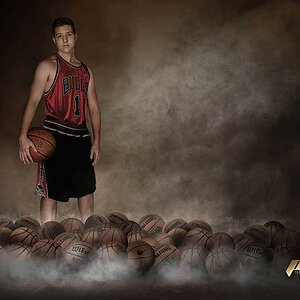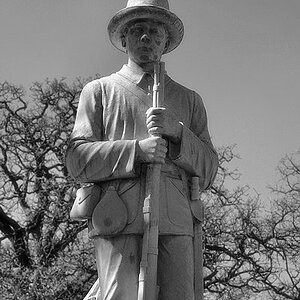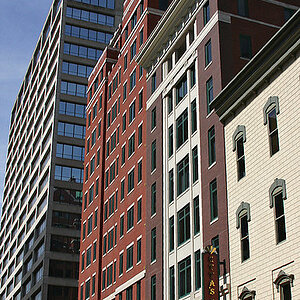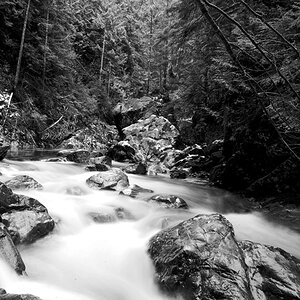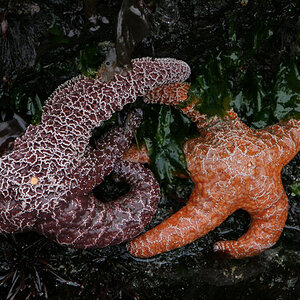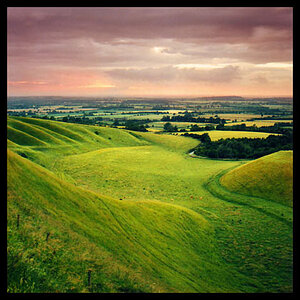peacock
TPF Noob!
- Joined
- Sep 26, 2010
- Messages
- 80
- Reaction score
- 0
- Location
- Hong Kong
- Can others edit my Photos
- Photos OK to edit
Since I've owned the Nikon D5000 (nearly a month), I've been reading through the entire manual over and over again. To my knowledge, I think I understand every single function and feature on the camera, but except for one thing, which perplexed me for the whole time... Dynamic or 3D-Tracking AF??
This is what it says in the manual referring to Dynamic:
Now the question is, how does both of them work? Here is an explanation from flickr:
This seems to answer the question, but the real explanation underneath is still very vaguely described. I mean, if the "top dog" asks advice from surrounding points, what's the final focus/decision based on? If the "top dog" judges the focus from surrounding focus points, isn't that like 3D-tracking then? Since in 3D-tracking, it uses different focus point to focus onto the subject. And how do you define "surrounding focus points" exactly? Does it refer to the focus points immediately next to the "top dog"? Or maybe within 2 focus points of reach?
Another explanation to dynamic AF is that the final focus/decision is based on the average focus of the "top dog" and its surrounding "friends". And in 3D-tracking, the final focus is solely based on the current focus point (and focus point could change to the next if subject moves). But then, that's just people's interpretation.
Also, in the manual, why doesn't it mention anything about pressing the shutter half-way for Dynamic AF, but mentions it for 3D-tracking? The way I first interpreted this is that in Dynamic, it predetermines the focus (based on "top dog and co." averaged decision) before you have even pressed the shutter half-way. But I'm not sure... maybe it starts tracking only when you've pressed the shutter half-way? So there's yet another mystery.
Now onto the real point at issue, how do you implement your knowledge of both the mechanics of Dynamic and 3D-tracking AF into real-life practical use? Since they both function rather similarly, I find it troublesome to decide. In the Nikon manual, it says to use Dynamic for erratic moving objects. Right okay. But for 3D-tracking, it just tells you to use it for moving objects in general. So, what mode do you use for moving objects?? Do you just use Single point AF?
Please help, fellow Nikon users. (Canon users also welcome :mrgreen
This is what it says in the manual referring to Dynamic:
Here is for 3D-Tracking:In AF-A and AF-C focus modes, user selects focus point manually (058),
but camera will focus based on information from surrounding focus
points if subject briefly leaves selected point. Use with erratically
moving subjects. In AF-S focus mode, user selects focus point manually
(058); camera focuses on subject in selected focus point only.
For Nikon owners, I'm sure you know how both seems to work. In Dynamic, the selected focus point does not move even when your subject is moving, but in AF-C/A mode, it would try to readjust the focus according to the moving subject, but the selected focus point still does not change. In 3D-Tracking, it's more obvious, the selected focus point would change to the next focus point that the moving subject is on.In AF-A and AF-C focus modes, user selects focus point using multi selector
(058). If subject moves after camera has focused, camera uses 3Dtracking
to select new focus point and keep focus locked on original
subject while shutter-release button is pressed halfway. If subject
leaves viewfinder, remove your finger from shutter-release button
and recompose photograph with subject in selected focus point. In
AF-S focus mode, user selects focus point manually (058); camera
focuses on subject in selected focus point only.
Now the question is, how does both of them work? Here is an explanation from flickr:
Bloozecruz said:Think of it this way; In dynamic, there's a top dog AF point. But he has lots of friends and he asks them for advice. He says to the guy to the left "Hey, what do you think? Am I still in focus on the subject?", lefty replies, "Looks good to me". Big dog says "thought so, thanks for the help".
In 3D, it's a team sport, there is no top dog. when the subject moves left the focus point says to the guy on the left "Hey, can't see the subject anymore, you see anything?", lefty replies "Yeah, they're right in front of me". Response, "tag you're it, you take over from here buddy".
This seems to answer the question, but the real explanation underneath is still very vaguely described. I mean, if the "top dog" asks advice from surrounding points, what's the final focus/decision based on? If the "top dog" judges the focus from surrounding focus points, isn't that like 3D-tracking then? Since in 3D-tracking, it uses different focus point to focus onto the subject. And how do you define "surrounding focus points" exactly? Does it refer to the focus points immediately next to the "top dog"? Or maybe within 2 focus points of reach?
Another explanation to dynamic AF is that the final focus/decision is based on the average focus of the "top dog" and its surrounding "friends". And in 3D-tracking, the final focus is solely based on the current focus point (and focus point could change to the next if subject moves). But then, that's just people's interpretation.
Also, in the manual, why doesn't it mention anything about pressing the shutter half-way for Dynamic AF, but mentions it for 3D-tracking? The way I first interpreted this is that in Dynamic, it predetermines the focus (based on "top dog and co." averaged decision) before you have even pressed the shutter half-way. But I'm not sure... maybe it starts tracking only when you've pressed the shutter half-way? So there's yet another mystery.
Now onto the real point at issue, how do you implement your knowledge of both the mechanics of Dynamic and 3D-tracking AF into real-life practical use? Since they both function rather similarly, I find it troublesome to decide. In the Nikon manual, it says to use Dynamic for erratic moving objects. Right okay. But for 3D-tracking, it just tells you to use it for moving objects in general. So, what mode do you use for moving objects?? Do you just use Single point AF?
Please help, fellow Nikon users. (Canon users also welcome :mrgreen


![[No title]](/data/xfmg/thumbnail/31/31741-ad9747739b48f0eb100f953fdf764930.jpg?1619734985)
![[No title]](/data/xfmg/thumbnail/31/31740-83040d547efdbb1f87736f24d2e9985c.jpg?1619734985)

![[No title]](/data/xfmg/thumbnail/38/38748-ed31bfa7e0ad498ba3aa5dfbf3666f8d.jpg?1619738704)
![[No title]](/data/xfmg/thumbnail/31/31742-596f6bbc60b2ba7fed2cd25f5aacf41c.jpg?1619734985)
